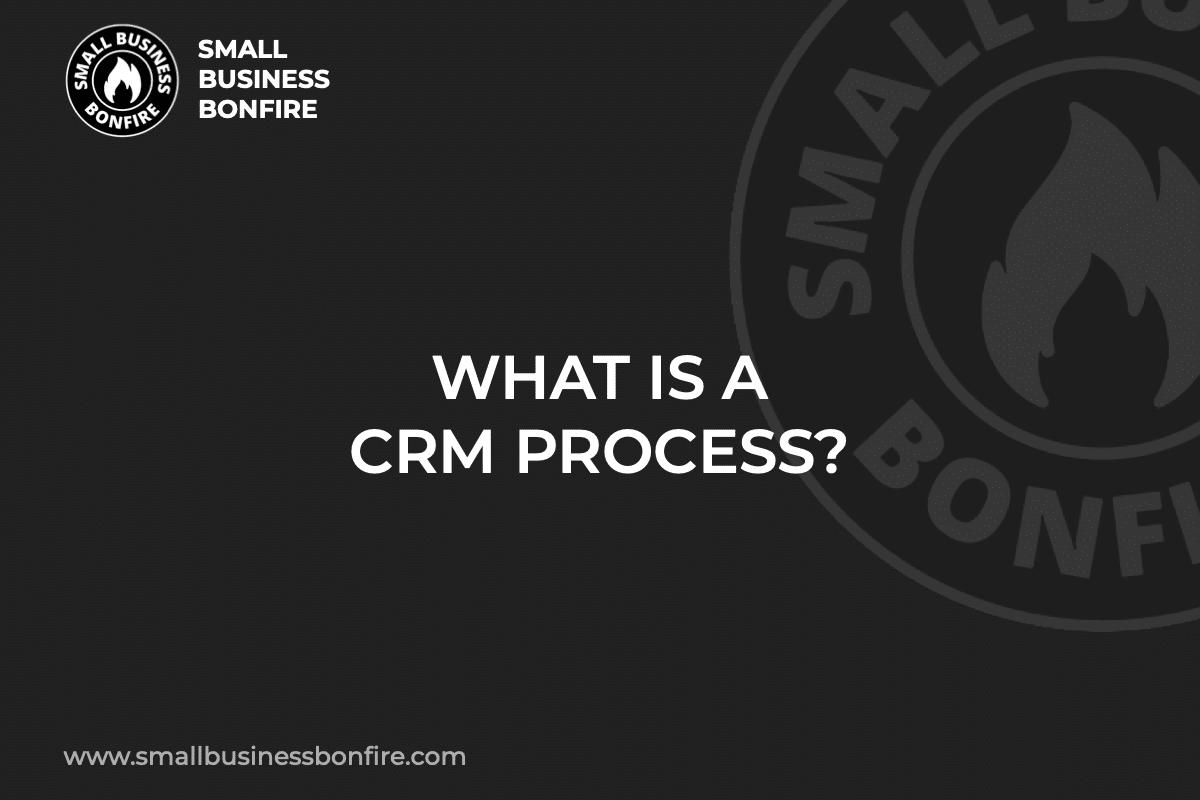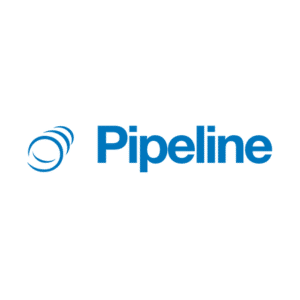Does your business have customer relationship management (CRM) software but struggles to manage and organize leads and existing customers? Have you and your team implemented a CRM process yet?
A customer relationship management process is essential to managing and improving your relationships with potential and existing customers.
My name is AJ. I’ve utilized CRM systems for several years. Throughout my time, I’ve learned that an efficient CRM process is essential to a company’s success.
After selling my business for multiple seven figures recently, I created this guide to help other small business owners hungry to boost sales and improve customer interactions.
Let’s get into everything you need to know about CRM processes!
Key Takeaways
- A CRM process is a strategy to understand your audience better and create tailored marketing messages.
- Incorporating CRM systems into a CRM process offers better team collaboration, higher productivity rates, more sales, and improved customer satisfaction.
- Cross-sells and upsells are two techniques that drive higher customer retention rates and more sales for your company.
- The customer lifecycle doesn't end after they make a purchase. Ensure a good customer service experience is part of your CRM process.
Related Reading: Best Small Business CRM
SBB Featured Partners
What is a CRM Process?
A customer relationship management process is your business’s strategy for establishing and maintaining personalized customer relationships.
Your goal with a CRM process is to include customer retention strategies at every stage of the customer life cycle.
Further, your CRM process’s goal is to improve the following business metrics:
- Company sales
- Marketing efforts
- Customer service
- Product development
CRM technology is an excellent tool for tracking and analyzing data throughout the sales process. And an efficient CRM process ensures your customer base receives ample attention, eventually leading to more sales and customer loyalty.
What is CRM Lifecycle?
The CRM or customer lifecycle is a summary of the ideal customer’s journey.
This lifecycle typically contains five stages, which include the following:
- Reach
- Acquisition
- Conversion
- Retention
- Loyalty
The customer lifecycle starts with a prospect becoming aware of your company’s product or service. Then, they make a purchase.
The long-term goal is to retain customers and see them continually purchase products or services from the company.
With customer relationship management technology, you can collect customer data at each step of the customer lifecycle.
This information is vital to improving your marketing efforts, sales process, customer service strategies, and more.
What are the Six Steps in the CRM Process?
Creating a CRM process is easier than you think (when you have the right information in front of you).
Below are the six steps I utilized when implementing processes into my CRM system.
It’s critical to note that CRM processes are a company-wide effort, demanding input from your sales, customer service, and marketing team.
Your entire team has to be on board for your CRM process to work as you design it!
1. Generate Brand Awareness
The first step in your CRM process is generating brand awareness.
Basically, this means you need to make a potential customer aware of what your company offers.
This step aims to attract new customers and catch their attention through effective marketing campaigns.
Marketing teams use various channels like social media and advertisements to generate brand awareness.
However, understanding your target customers is the first step to creating targeted marketing campaigns.
Understand Your Target Audience
You must understand your target audience to turn potential customers into repeat buyers.
Think of this stage as getting into the heads of your potential customers.
What products do they usually purchase? Where do they buy things from? What types of ads prove most effective?
The goal is to understand as much information as possible about the people who will buy your products or services.
Therefore, your marketing team must research customer aspects like:
- Demographics
- Purchasing behavior
- Interests
- Preferences
After obtaining this information, it’s time for customer segmentation.
Segment Your Target Audience
The next stage is segmenting your target audience based on the customer data you collect.
Separating target customers into groups allows you to categorize what each division prefers.
For example, you may have one segment of your audience who primarily purchases products after seeing advertisements on Instagram.
On the other hand, a different segment prefers reading first-hand customer experiences before buying something.
These two groups demand different marketing strategies!
One big mistake I made early in my career was assuming my target audience had the same buying habits and preferences.
Create Marketing Campaigns Around Your Target Audience
Once your target audience is segmented, you can create marketing campaigns around each division.
Utilize your customer data and previous marketing strategies to cater to your target customers.
Also, feel free to switch up your marketing campaign if it’s not working.
After finding the right strategies, your team can use marketing automation to save time and be more productive.
2. Nurture Your Leads
The second step in creating your CRM process is nurturing your leads.
Utilize your CRM tool to analyze customer information and see what encourages certain customer segments to purchase products or services.
Some segments are motivated to buy products if they have a first-time buyer discount. Others are encouraged if they see other people talking about the brand on social media.
Use historical customer information when you manage marketing campaigns to convert leads into customers.
3. Acquire Leads & Manage Them In Your CRM
Now it’s time to acquire leads and gain information about these potential customers for your CRM tool.
One popular strategy I used to acquire leads was implementing a sign-up form on our company website.
The form stated that customers would receive a 10% off coupon when they entered their information.
Other strategies include sales reps using a live chat to connect with leads one-on-one.
Additionally, some CRM tools have lead generation and enrichment tools that gather essential customer information like addresses or buying preferences.
4. Convert Leads Into Customers
Capturing the attention and interest of leads is critical. However, converting these leads into sales is equally as essential.
Combining content marketing and marketing automation is an effective way to convert leads.
At this stage, use your CRM system to analyze the data it captured about your website visitors’ data and activity.
After that, sales teams should determine customer interest and build customer trust until they decide to purchase your products or services.
Remember, lead conversion varies based on your industry and product offerings.
While promotional marketing emails may work for one business, multiple in-person conversations may be the most effective strategy for the next.
5. Build Strong Customer Relationships
The customer journey continues after they purchase your products or services.
Turning current customers into repeat customers is incredibly valuable. Therefore, when you provide superior customer service, it builds strong connections.
Business growth is built on building customer relations.
Ensure your customer service processes are pristine and continually developing to ensure each customer interaction is better than the last.
Multiple communication channels (live chat, email, phone, SMS, etc.) improve customer service relationships because your business is more accessible.
Further, if your company has customer complaints or issues, handle and address them immediately.
Nothing is worse than a customer having a poor experience and receiving no response or accountability from the company.
Even if a customer doesn’t enjoy your product or service, you can still provide quality customer support by offering a resolution or refund.
6. Drive Upsells & Cross-Sells
The final step in the CRM process is driving upsells and cross-sells.
These techniques encourage repeat buyers, helping boost sales and customer retention rates.
What are these sales strategies?
Upselling is a sales tactic where you convince current customers to purchase additional products or upgrades connected to their initial purchase.
For example, an upsell would be a warranty on the lights if your company sells tech gear like special outdoor lights.
Another example of an upsell is letting customers know about a more expensive product your company offers, explaining that it has more features than the item the customer is about to buy.
In comparison, cross-selling is a tactic that obtains more value from a customer purchase.
Basically, cross-selling suggests customers purchase additional products or services that complement their existing purchases.
As a result, your sales team generates more revenue from one customer already in the purchasing mindset.
An example of cross-selling is encouraging customers to purchase a water bottle sleeve when they buy a water bottle. You can entice customers to purchase add-on products by addressing the benefits of doing so.
In the water bottle example, explaining that the sleeve will keep their drink colder for longer encourages customers to purchase two products instead of one.
Create sales strategies for upsells and cross-sells by accessing customer data from your CRM platform.
Also, ensure you utilize your CRM solution to organize customers based on their purchase history—both the customer and your business benefit from this.
Customers are made aware of products they might like while your sales team generates more revenue!
Benefits of Incorporating CRM Software Into Your CRM Process
Now you understand how to create an effective CRM process.
And if you still need to convince yourself it’s worth the time and effort, I’ve outlined five benefits of utilizing CRM tools with your process.
Customer relationship management includes several advantages. However, for time’s sake, I’ve compiled the most prominent advantages of a CRM system alongside your CRM process.
Improved Customer Satisfaction
A customer relationship management system improves customer-related operations and customer satisfaction rates significantly.
A CRM strategy provides various communication outlets, allowing customer service reps to reach your audience in numerous ways (email, phone, live chat, SMS).
Additionally, CRMs organize customer data automatically, ensuring your team has abundant data about each customer.
For example, CRM solutions can gather and organize the following pieces of customer information:
- Contact data
- Preferences
- History with the company
- Activity on your website
- Interests
As you improve customer service relationships, you can boost business performance and encourage more repeat customers.
Higher Productivity
Incorporating a CRM system into your CRM process also results in higher productivity.
CRM tools automate essential customer relationship management tasks, including the following:
- Lead capturing
- Information gathering
- Organizing data
- Sales force automation
- Contact management
With automated data entry, your team no longer wastes time manually entering new customer information into databases or spreadsheets.
Efficiently managing customer service connections is also incredibly valuable with a CRM system. These tools automatically send emails or notifications when customers purchase multiple times from your company.
Finally, CRM solutions provide all data in one place, allowing customer service reps to access their customer’s entire history quickly and analyze customer data collected.
With all of these benefits combined, it’s no surprise that using a CRM system will simplify customer service processes and increase productivity for your business!
Better Team Collaboration
One of my favorite parts about using CRMs within my CRM processes is that they improve team collaboration and communication.
CRM solutions prevent data silos, which are segments of information and data about a customer that certain departments and individuals can’t access.
When everyone on your team can access and share the same information, you have a clearer picture of the customer journey.
Additionally, better team collaboration allows for more creativity and sharing of ideas.
Lastly, there is a lower chance of poor customer service when everyone on your team is on the same page.
Easier Access to Company Information
CRM tools also make it easier to access vital company information.
Instead of searching through manual spreadsheets, various software systems, or email threads, you can easily find customer-related data with a CRM solution.
Plus, since CRMs integrate with your existing software (like accounting solutions), you don’t have to worry about switching between multiple programs or applications.
Overall, customer relationship management tools provide you with a single source of truth for essential company data.
Data-Based Decision Making
The final benefit of incorporating CRM into your CRM process that I’ll mention is that it promotes data-driven decision-making.
CRMs collect and analyze thousands of pieces of information related to your audience, sales funnel, customer experience, marketing strategies, and more.
You and your team can utilize this information to make better decisions because they are based on what’s actually happening in your sales pipeline.
So, rather than make guesses about which marketing technique will work best, you can instead rely on the data your CRM collected from your previous strategy.
Even if your previous marketing strategy was unsuccessful, the CRM data can tell you what went wrong and why it didn’t work!
CRM Process Example
I’ll briefly outline a CRM process in case you’re still questioning what one looks like.
The steps in the CRM process I’ve used in the past include the following:
- Step 1: Gather Customer Information
- Step 2: Analyze Your Customer Data
- Step 3: Develop a Targeted Marketing Strategy
- Step 4: Create Personalized Content for Customers
- Step 5: Utilize Upsells and Cross-Sells as Necessary
- Step 6: Evaluate Your Process
Skipping steps in the CRM process isn’t an option because each one offers valuable insights and data you can use for the following stage.
By following the above CRM process, you can increase customer satisfaction rates, boost your company’s productivity, and make data-driven decisions that are sure to benefit your business!
Best Small Business CRM Software Providers
Finding a CRM provider can be a lengthy process if you don’t know where to start.
When I was searching for my first CRM software, it took me months before I even started a free trial!
Comparing features, functionalities, third-party integrations, and price are integral factors when determining which CRM software is the best fit for your company.
Below I’ve compiled some of the top CRM providers for small businesses!
HubSpot CRM
HubSpot is the ideal CRM solution if your small business requires a scalable solution.
With HubSpot, you can seamlessly upgrade and change your plan to fit your needs.
Even if you’re on a tight budget, this CRM provider has a solution for you, offering a free plan that hosts unlimited users (most CRMs limit the users to two).
The detail I like most about HubSpot is the lead nurturing tools. For instance, HubSpot provides free email marketing tools that allow you to personalize messages using a drag-and-drop editor.
Check out our extensive HubSpot CRM review to learn more!
Freshsales
Freshsales is another excellent CRM provider. This solution is the best overall CRM for small businesses requiring robust solutions at an affordable rate.
Although Freshsales doesn’t offer a free plan, pricing is affordable, with rates starting at under $18 per user.
Freshsales makes it easy to manage customer-related operations, offering a live chat software called Freshchat to centralize the customer experience.
If you are interested in learning more about Freshsales, take a look at our in-depth Freshsales review!
Bitrix24
Bitrix24 is an excellent CRM provider that specializes in customer interactions.
That said, Bitrix24 has a built-in phone for in-app calling, making it easy for sales reps to access data and provide an excellent customer experience.
Also, Birtrix24 allows unlimited users on your plan at an affordable rate.
Do you want to learn more about Bitrix24? Check out our full Bitrix24 CRM review!
Final Thoughts
A CRM process is necessary to make every customer interaction personalized throughout the CRM stages.
CRM processes improve every business aspect, including customer service, marketing, sales, and product development efforts.
Most importantly, CRM processes allow you to analyze your audience throughout the steps of the CRM lifecycle, ensuring you target them effectively.
What tricks does your company use to turn a potential customer into a buyer? Let us know in the comments section below!
Good luck finding the CRM software that best matches your business’s needs.
Newsletter Signup
Join The Leads Field Guide Newsletter for tips, strategies and (free) resources for growing your leads, and closing more deals.




